Beyblade Types 101: Your Essential Guide
Beyblade Types 101: Your Essential Guide
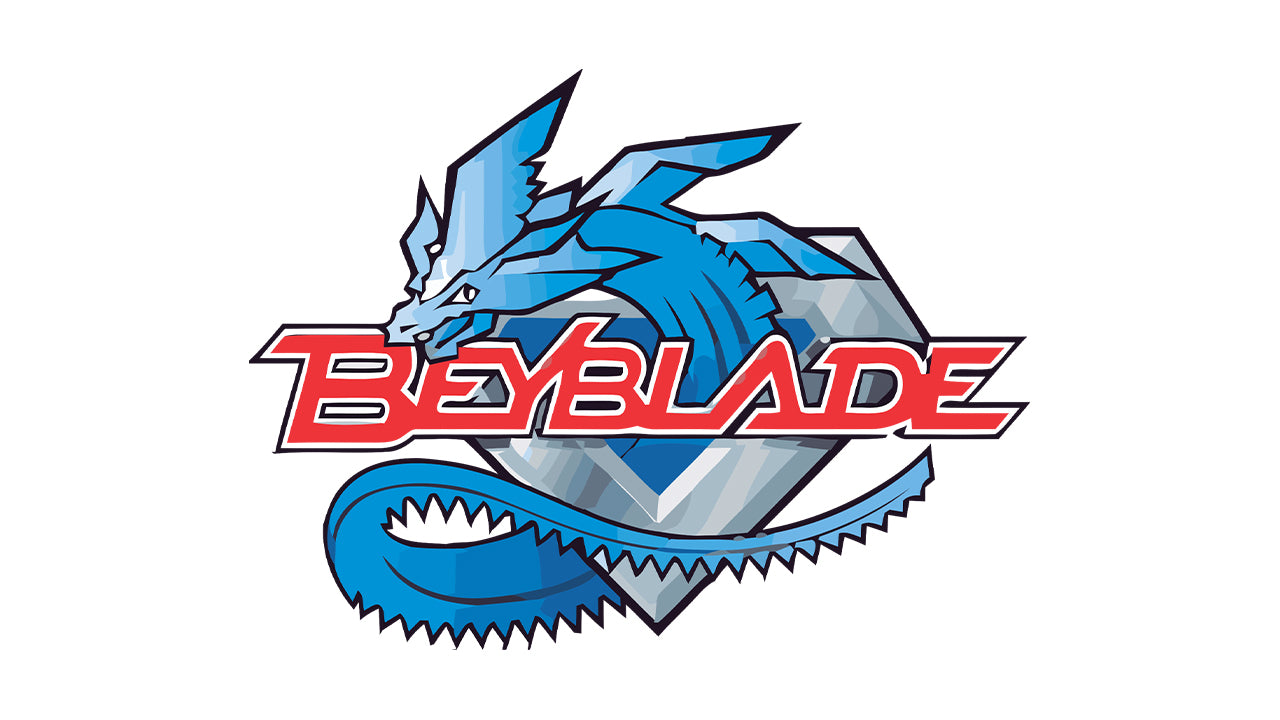
So you're just getting into the wide world of Beyblade but don't know where to begin. It's no wonder. The Beyblade franchise is now a well-established market with a long history. It all began in Japan in 1999, back when the originals were based on traditional paper, lead, and cast iron battling tops called Beigoma. But thanks to Takara Tomy and Hasbro, Beyblades have become popular the world over, led by strong marketing, animated series, comics, and even card games.
Pros, enthusiasts, and fans of the TV show all know that the first step to understanding the Beyblade world relies on knowing the four main types of Beyblade, and the strengths and weaknesses of each. This article will explore each of these types in depth and offer insights and strategies to help you become a true Beyblade master.
How Does a Beyblade Work?
Beyblades may be different, but at their heart, all share a similar construction. They are essentially spinning tops designed for battle. Beyblade battles take place in a circular plastic arena called a Beystadium, and Beys are launched with the help of basic ripcord launchers. A battle ends when the enemy Beyblade is knocked out of the circular arena or knocked down.
While every series varies slightly in its construction and materials, there are always the same major components: the energy layer, which makes contact with the opponent; the forge disc, which weighs and balances the Bey; and the performance tip, which keeps the Blade spinning on the surface.
Older Beyblade models also come with bit chips (Beyblade classic) or faces (Metal Saga) that show the spirit of each Beyblade. Newer models from the Beyblade Burst series have these designs incorporated into the energy layer.
The Four Primary Beyblade Types
When choosing your Beyblade, your first criterion should always be type. Each Beyblade type comes with its own strengths, weaknesses, and strategies, and mastering the game begins with knowing how to identify them.
Attack Type Beyblades
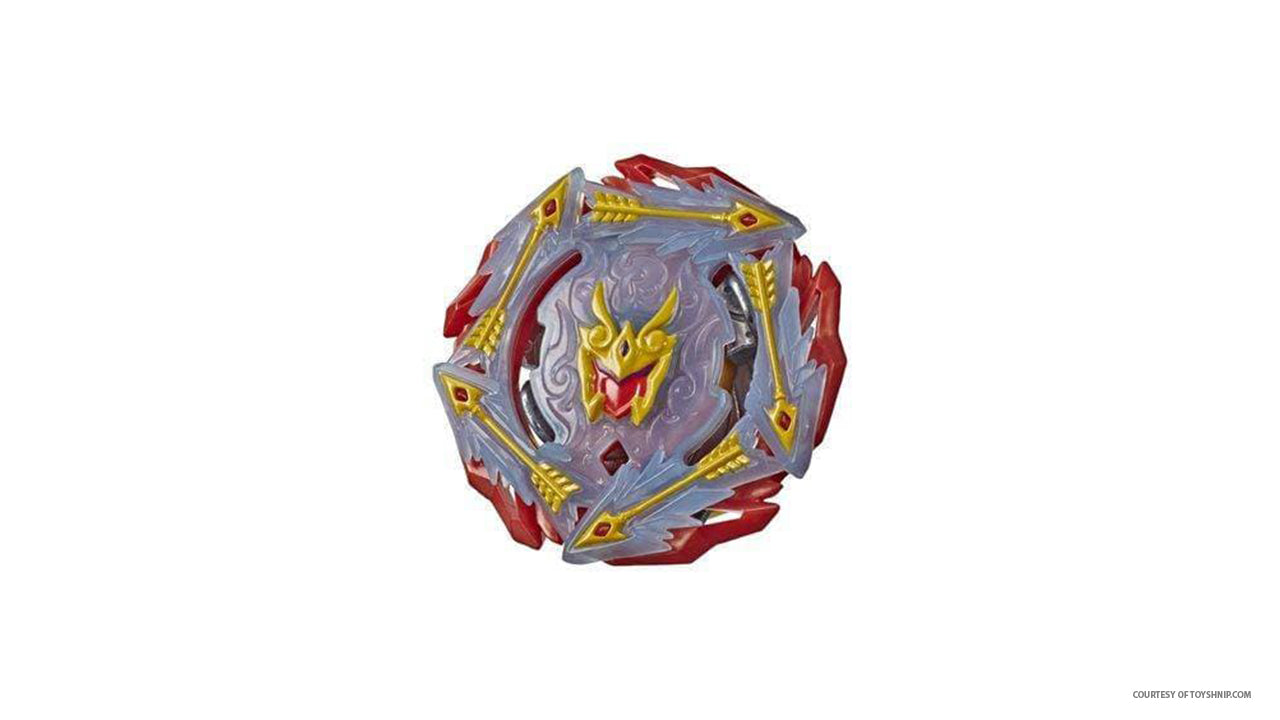
The name says it all. Attack-type Beyblades focus their energy on hard-hitting attacks. Their spiky energy layers extend far out from the core, prioritizing attack power over defense. Forge discs and performance tips are low stamina and high speed, focusing on a quick knockout rather than a sustained battle.
This lightness means many attack types can suffer from recoil upon impact, though this can be mitigated by armor.
Some famous attack Blades are Valt Aoi's Ultimate Valkyrie Legacy Variable-9 and Lui Shirosagi's Guilty Longinus Karma Metal Destroy-2.
Defense Type Beyblades
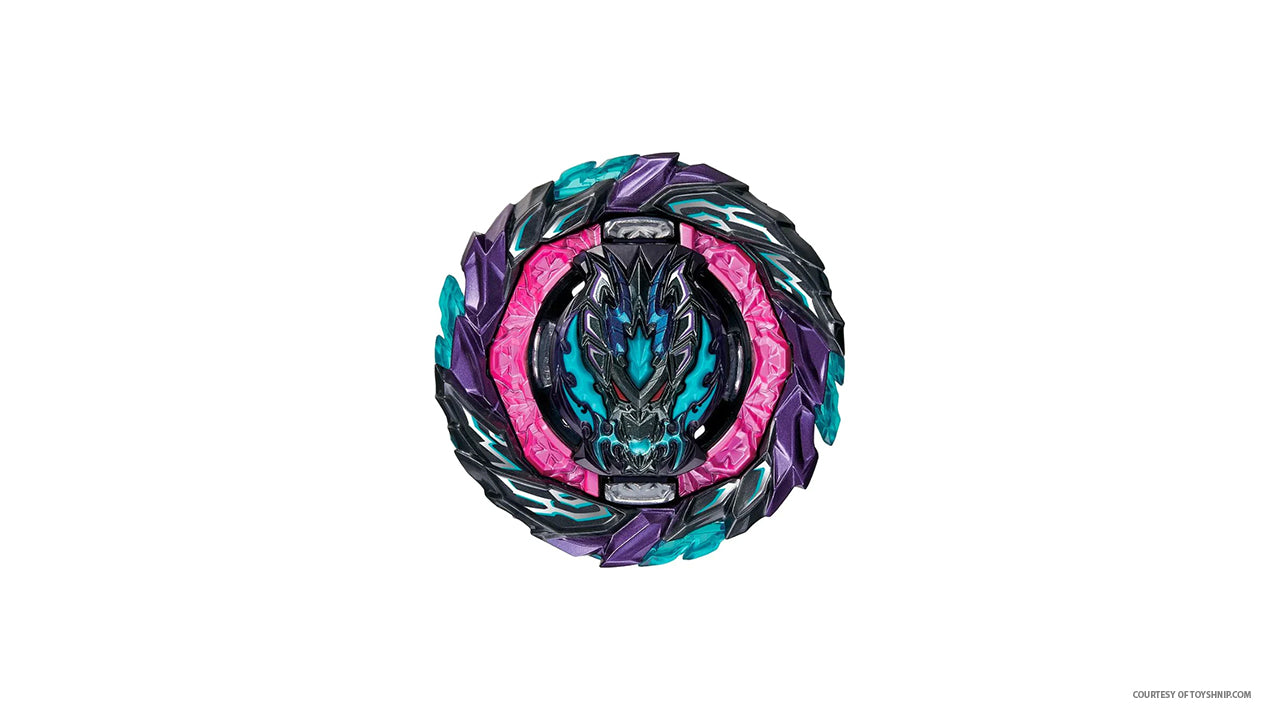
In contrast to the lightweight attack-types, defense-type Blades focus on defense and repelling any threat. Their design is, therefore, much more heavy and robust, with weighty forge discs, a low-center of gravity, and more circular designs to minimize impact. They aren't built for the longest battles, though, and do have just enough attack to knock out stamina Beys.
Some well-known defense Blades are Basahara Suiro's Roar Bahamut Giga Moment-10 and Phelix Payne's Prominence Phoenix Tapered Metal Universe-10.
Stamina Type Beyblades
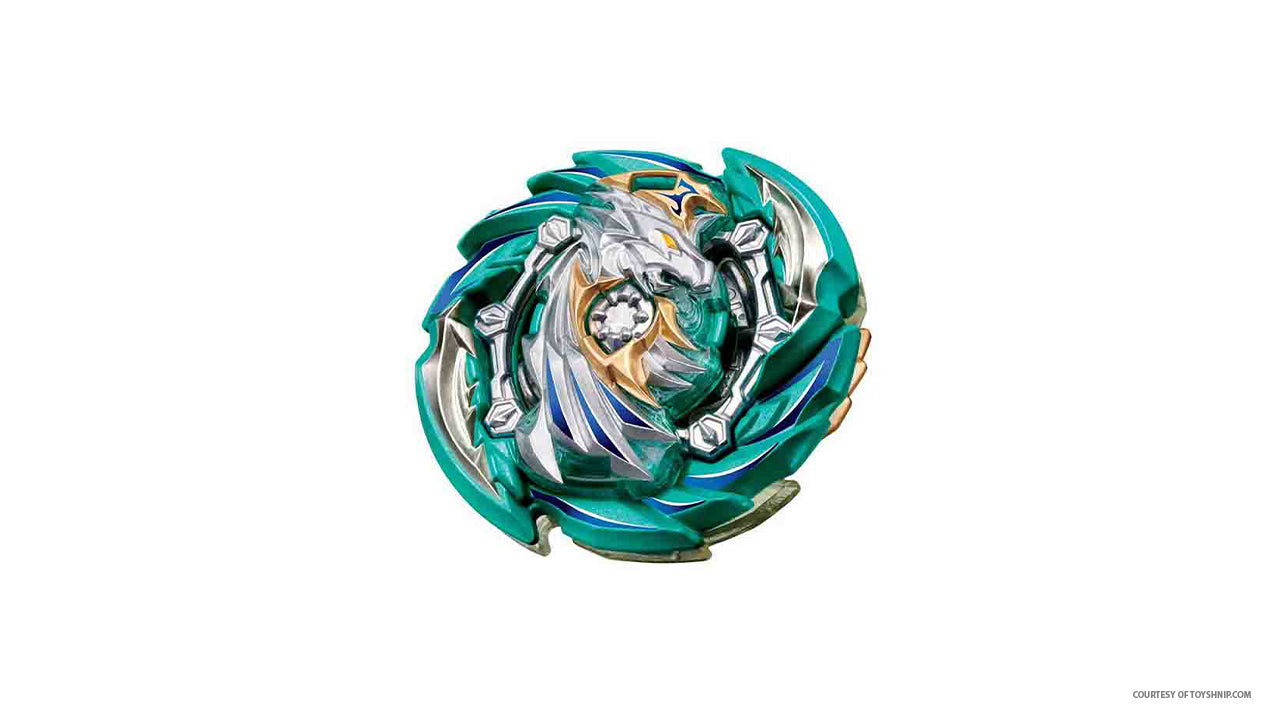
Why fight your opponent when you can outlast them? Stamina Beyblades are designed to stay spinning as long as possible. Their performance tips are thin to reduce friction and their forge discs are designed for outward weight balance. This delicate balance makes stamina Blades vulnerable to attack-type Beys, but their stability stands them in good stead against defense and balance-types.
Famous stamina-type Beyblades are Chris's Phantom Orion B:D and Fumiya Kindo's Wizard Fafnir Ratchet Rise Sen
Balance Type Beyblades
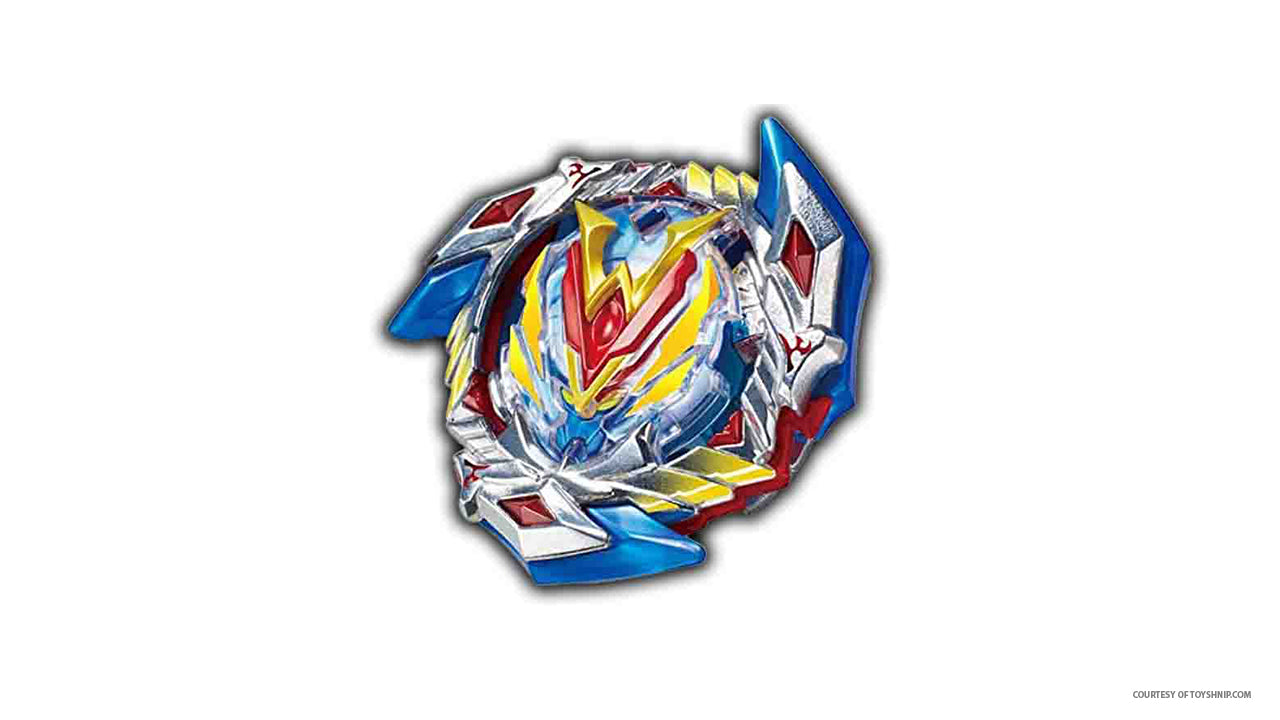
If the other three Beyblade types are different corners of a triangle, then balance-type Blades sit comfortably in the center. These Beyblades contain a mix of two or more other types, providing a well-rounded option that can be handy in any scenario.
This same balance can also work against balance types, as a strongly specialized Beyblade can overcome its multi-purpose nature.
Two famous balance-type Beyblades are the Lord Spriggan Blitz Dimension' and Pluto's Fusion Hades AD145SWD.
Specialized and Hybrid Beyblades
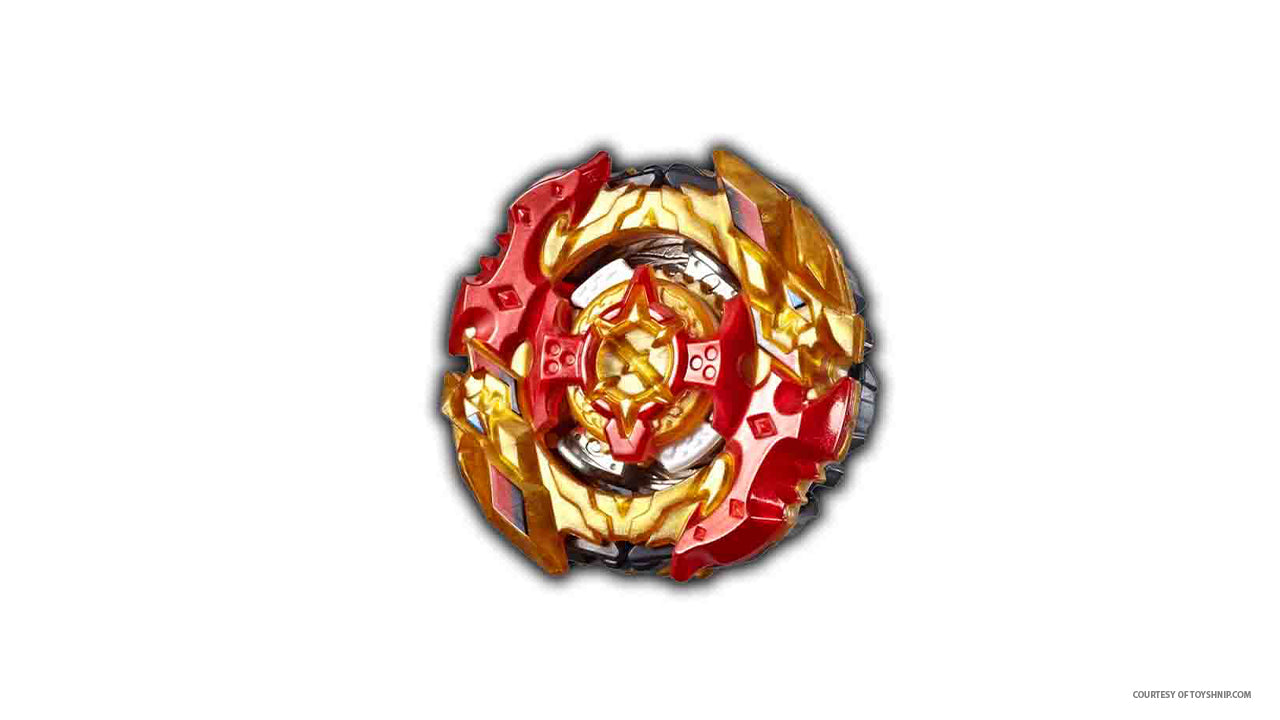
A Beyblade isn't limited to just one type. Specialized and hybrid Beyblades introduce an extra layer of strategy to the battlefield. With the release of the Metal Saga ranges (Metal Fusion, Metal Masters, Metal Fury, and Shogun Steel), new features and systems began to be incorporated to spice up Beyblade builds.
Mode changing is one such feature, which allows players to adjust the performance tips, forge discs, and other components of their Beyblade to alter their function, attack and defense style, and their type. Beyblades can also be broken down into their base components and assembled in countless ways.
Systems are another feature introduced with specific series that alter the dynamics of the game. The most recent "Burst" system allows Beyblades to burst into smaller parts, dealing extra damage or slowing down an opponent.
Customization and Strategy
The Importance of Beyblade Components: Energy Layer, Forge Disc, and Performance Tip
- Energy Layer: This is the top part of the Beyblade and the one that'll be making the most contact with an opponent. Its shape and design will affect the performance and burst ability of the Blade and will vary depending on type.
- Forge Disc: This part is at the core of every Beyblade, giving balance and stability. Forge discs are mostly made of metal and vary in weight, depending on the attack type. A heavier disc means a stronger, but slower Beyblade, and is common in defense and stamina types.
- Performance Tip: This is the part of the Beyblade that makes contact with the stadium and governs its movement in a clockwise or counter-clockwise spin. Thinner tips minimize friction and have a longer spinning time, while thicker tips have more stability when attacking.
How Customization Affects a Beyblade's Type and Performance
- The latest series of Beyblades (Burst) are highly customizable, allowing for countless combinations and playstyles. It's easy to assemble Beyblades to match opponents and adapt to changing conditions. Swapping out for a heavier forge disc, for example, can give a Beyblade a better defense against an attack-type opponent.
- Changing one or more components can effectively change the type of the Beyblade. For instance, players can replace the energy layer of a defense-type Beyblade with a more attack-type layer to transform the entire blade into a balance-type for more offensive play.
Strategies for Customizing Each Type of Beyblade for Competitive Advantage
- Attack Type: Choose a wider performance tip that gives better stability when attacking. Combine this with a lighter forge disc for increased agility.
- Defense Type: Stability is key for a good defense. Choose a heavy forge disc for increased weight and a thicker performance tip for better balance.
- Stamina Type: Stamina is about outlasting the other guy. Give yourself a fighting chance by choosing the thinnest performance tip possible for minimal friction and a balanced forge disc for stability.
- Balance Type: It's all about finding what works. Try out different components to see which combinations suit your play style and can best the most opponents.
Beyblade Stadiums and Gameplay
The Role of Beyblade Stadiums in Battle Outcomes
- Beyblade stadiums come in many shapes and sizes, all of which influence the outcomes of battles. Some have pockets, pits, slopes, or a combination of all three.
- Stadiums with more obstacles favor Beyblades with higher agility and stronger adaptability. Be sure to be familiar with the layout before the battle starts to make the best decision.
How Different Stadium Designs Can Benefit or Challenge Certain Beyblade Types
- Flat Stadiums: An open battlefield favors a more defensive style of play. Attack types may find it harder to find the opponent, and stamina and defense types can spin freely without worrying about obstacles.
- Stadiums With Pockets or Pits: These favor attack types. Speed and power can easily knock opponents into these hazards for quick victories before their stamina runs out.
Advanced Tips for Beyblade Types
Insights Into Advanced Strategies for Each Beyblade Type
- Attack Type: Speed and power are important. Proper launching is crucial to maximizing both. Learn to launch for maximum speed without sacrificing control. The battle should be over before it begins.
- Defense Type: The closer a defense-type Beyblade is to the center of the stadium, the better. This gives it room to spin freely and stay clear of obstacles and attack-type opponents for as long as possible.
- Stamina Type: While a strong launch may seem like the best idea for maximum energy, a soft launch is better for extending spin time and maintaining control.
- Balance Type: There aren't any hard and fast launch or positioning rules for this type due to its sheer adaptability. That said, aim to counter your opponent's type. Use faster launches against defense and stamina and slower launches against attack types.
How to Adapt Your Gameplay Based on the Type of Beyblade You're Facing
- Against Attack Types: Use heavy or balanced forge discs for stability.
- Against Defense Types: Go for a strong attack with wider energy layers and more aggressive and agile performance tips.
- Against Stamina Types: Stamina will outlast you and should be countered with stronger attacks that they can't effectively repel.
- Keep experimenting with types and combinations to find the best Beyblades for certain stadiums, opponents, and your own preferences.
Tips for Selecting the Right Beyblade
You may still be a bit bewildered about which Beyblade would be right for you. Here's a few tips to narrow your choice:
- Playstyle – Consider how you like to play the game. Do you want to outlast your opponent (stamina) or go straight for the knockout (attack)? Choose the style you enjoy the most.
- Experience Level – If you're still finding your way, choose a simpler type of Beyblade to begin with. As you grow in experience, you can experiment with hybrid Beys and interchangeable parts.
- Your opponent – What Beyblade type does your foe favor? Success in battle often relies on analyzing your opponent and choosing the right counter to their Beyblade.
- Experiment – Try, fail, and find out. The way to find your playstyle is often by finding out what isn't. Keep experimenting with different types and strategies, and see which you tend to favor.
- Research – Sift through online reviews of Beyblades, ask forums and friends, and get as many recommendations as possible. Beyblade has a strong community and they'll be more than happy to help you.
Join the Battle With ToyShnip!
Becoming a Beyblade master relies heavily on your knowledge of Blade types, their customization, and their counters. You need to analyze every battle before going into it and be able to adapt to the changing battlefield.
To begin with, though, you're going to need a Beyblade, and ToyShnip has everything you need. We have a wide range of Blades, boosters, and components to help you find your feet in the arena. Why not check out our store and start your Beyblade journey today?
FAQs
h3 data-mce-fragment="1">How many types of Beyblade are there?There are four main types of Beyblade: attack, defense, stamina, and balance. The latter incorporates elements from two or more of the other types.
Which Beyblade type is best?
In the right hands, any Beyblade type can be the best. It depends on your preference. That said, attack Beys aren't often used at the professional level and the community at large is more drawn to defense and stamina types, with hybrids of the two being popular.
What determines a Beyblade type?
The nature of the Beyblade's components will usually be an indicator as to their type. For example, smaller performance tips indicate a stamina-type Beyblade, while a large serrated energy level will identify an attack type. Examining each component can be helpful when identifying balance types.
How do I know what kind of Beyblade I have?
Start by checking the components and looking for telltale signs that can categorize it. For example, a rounded energy level will indicate a defense type. There are also many online communities and databases to help you identify your model or its various parts. Try asking on fan forums if you're really stuck.













































Gracias por tan valiosa a información la desconocía y estaba buscando la pero gracias a ustedes ya la obtuve. Está información vale ORO 🪙🥇
Leave a comment